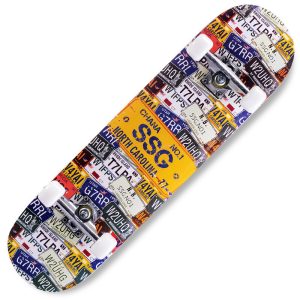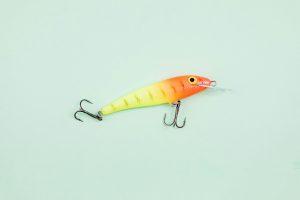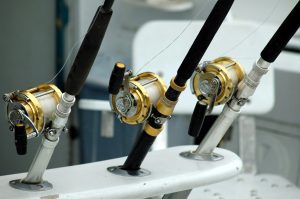
How to Kickflip – Kickflip Trick Tips
How to Kickflip – Kickflip Trick Tips Mastering the kickflip is a pivotal moment for any skateboarder, marking a transition from beginner to
The gear ratio of a fishing reel is a topic that can be made as intricate or straightforward as desired. This piece centers on explaining what the gear ratio signifies in a fishing reel and its impact on your fishing endeavors. However, it refrains from delving deep into the technicalities and functions of the gear mechanisms. If a detailed exploration of the technology within reels is what you seek, then this article may not be suitable.
So, let’s elucidate what the gear ratio signifies in the realm of fishing reels.
The gear ratio of a fishing reel indicates the speed at which it retrieves the line, often referred to as the line recovery rate.
Gear ratios differ from one reel to another, but they are all expressed in the same format.
For instance, consider a gear ratio of 5.2:1. In this notation, the “1” denotes one complete turn or revolution (360°) of the handle. In baitcasting reels, the “5.2” signifies how many full rotations the spool completes with a single turn of the handle. In spinning reels, the concept is similar—the rotor rotates instead of the spool.
In essence, the higher the gear ratio, the quicker the line retrieval, whereas a lower gear ratio results in a slower line retrieval.
The diameter of your spool will affect the amount of line it retrieves per one complete turn of the handle. Sometimes this is referred to as inches-per-turn (IPT). The larger the spool diameter, the higher the IPT. The smaller the spool diameter, the lower the IPT. This also means the more line on your spool increases diameter, increasing the IPT. And vise-versa, the less line on your spool, the lower IPT.
The honest answer is, it varies based on personal preference. The importance of gear ratio is subjective and entirely up to the individual angler. Many seasoned fishermen, boasting years of experience, successfully fish without ever concerning themselves with gear ratios. Practically speaking, having a gear ratio that’s considered “wrong” won’t hinder your ability to catch fish. However, aligning the gear ratio with your fishing style can undoubtedly enhance your efficiency and reduce fatigue. For those who prefer not to delve into this detail, below are well-rounded gear ratios suitable for effective fishing across general scenarios:
5.2:1 for an Ice Fishing Reel
5.3:1 for Freshwater or Saltwater Inshore Spinning Reel
6.3:1 for a Bass Baitcasting Reel
4.9:1 for a Saltwater Surf Fishing Reel
Musky, being sizable fish with a preference for larger prey, often necessitate a fast bait retrieval technique to entice them. If a musky angler opts for a reel with a low gear ratio to rapidly reel in the bait, it will demand more effort compared to using a high gear ratio. Is this significant? In this scenario—yes, it can be quite significant if the exertion becomes exhaustive and fatiguing. Interestingly, in the realm of musky fishing in Minnesota, there’s a saying that it takes 10,000 casts to catch a musky—a curious correlation for the land of 10,000 lakes.
Utilizing a high gear ratio, particularly in this scenario, minimizes fatigue and physical strain after a day filled with swift retrieves, allowing for less resting and more fishing. Moreover, it enables the musky angler to work the lure more effectively, consistently achieving the rapid action required with comfort.
On a side note: “Work” here refers to the physics concept of Force x Time.
The optimal answer depends on your intended fishing approach. Generally, we recommend a gear ratio of approximately 4.9:1 for saltwater applications. This slower range proves excellent for bait rigs, as they necessitate a gradual retrieve to keep the bait securely on the hook during retrieval. It also prolongs the bait’s presence in the strike zone when moving it along the bottom, ideal for species like flounder or red drum (redfish).
A gear ratio of 4.9:1 is versatile for effectively using a variety of lures as well. If your gear ratio is on the slower side, fret not, as you can still work lures effectively; it just requires exerting extra effort to reel in faster. Keep in mind that saltwater reels generally have larger spools—especially surf reels—resulting in a higher Inches-Per-Turn (IPT) compared to their smaller freshwater counterparts with matching gear ratios. Refer to the IPT section above for more details.
What gear ratio is best for bass fishing? Once again, the answer varies.
Unlike saltwater fishing, employing live bait is not very common in bass fishing. Artificial lures take precedence as the primary bait of choice. Therefore, we recommend utilizing a medium gear ratio of approximately 6:1, as seen in our bass reel, to accommodate the extensive range of bass lures. This speed aligns well with the general pace of artificial crankbaits and spinnerbaits mimicking a baitfish evading predators.
A medium gear ratio allows you to effectively employ lures at both slow and fast speeds. You can slow down to work swimbaits and deep-diving crankbaits deliberately, then speed up to eliminate slack produced while using worms, jigs, jerkbaits, and topwater lures. Typically, avid bass anglers prefer a fast gear ratio for lures causing slack in their line or when they need to swiftly maneuver the fish out of dense cover. The faster you can reel in slack, the faster you gain control over the lure, set the hook, and extricate fish from heavy cover. However, professional bass anglers maintain multiple rod and reel setups for this purpose (a substantial investment). An average angler can achieve this effectively with a single baitcaster sporting a medium gear ratio. You simply need to reel faster for increased speed and ease off when necessary.
For those primarily focused on fishing with soft plastics, we recommend opting for a medium to fast gear ratio, approximately 6:1 or higher.
Soft plastics, especially plastic worms, prove highly effective around heavy cover and areas prone to snags. In such scenarios, it’s advisable to bring the fish out of cover as swiftly as possible to minimize the risk of entanglement or getting wrapped around the cover. Fast gear ratios excel in these situations. Medium gear ratios work well too, but once again, you’ll need to physically reel in faster to achieve the desired speed. If budget permits, investing in a fast reel and a medium reel is a wise move in this scenario.
Unless you plan to fish avidly, prioritizing the right rod and reel is more crucial than fixating on the perfect gear ratio. There isn’t a one-size-fits-all gear ratio for versatile fishing. The aim is to find the most suitable gear ratio that accommodates a wide array of fishing techniques. To achieve this, we recommend opting for a gear ratio ranging from 4.9:1 to 6:1, falling between slow to medium, suitable for all-around fishing. This range allows you to efficiently utilize a diverse range of lures and baits, as seen in our fishing combos.

How to Kickflip – Kickflip Trick Tips Mastering the kickflip is a pivotal moment for any skateboarder, marking a transition from beginner to

How to Put on Knee Pads for Work When working outdoors or participating in sports, protecting your knees is essential. Quality knee pads not

UNDERSTANDING FISH HOOK SIZES Mastering the art of reading fishing hook sizes is a simple yet crucial skill. It boils down to one key factor:

PICKING THE PERFECT FISHING REEL Understanding the various types of fishing reels is easier than you might think. While there’s a wide array of options